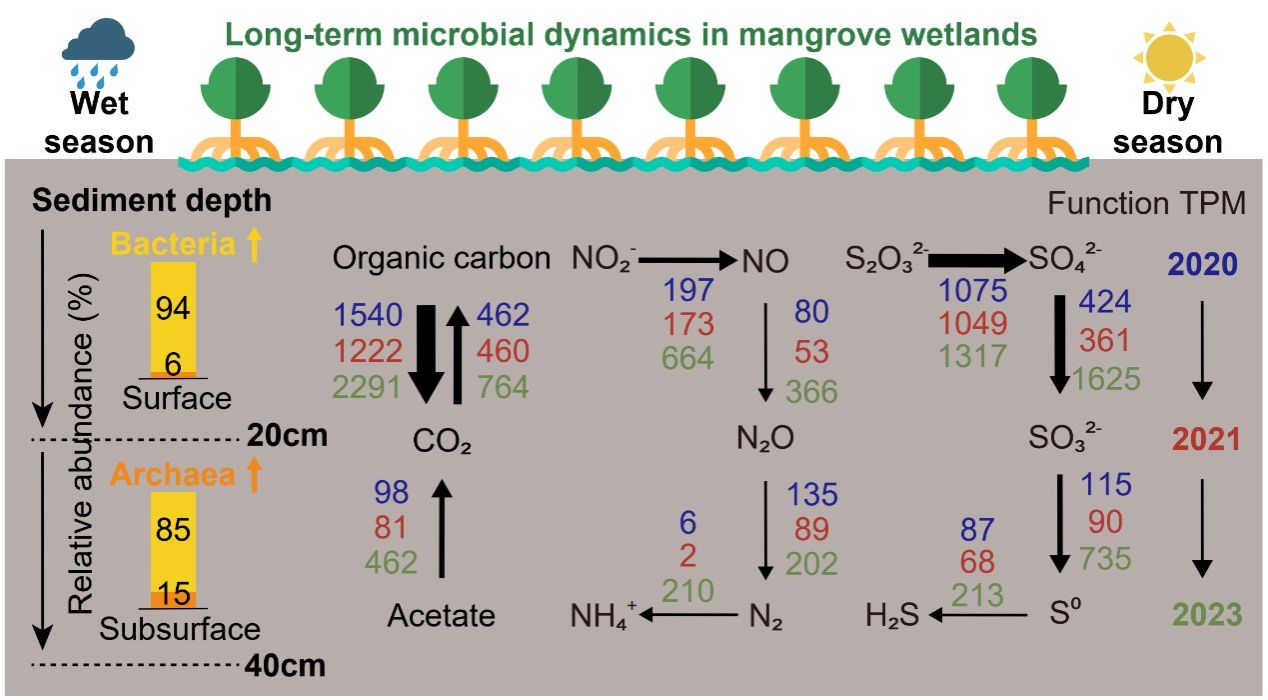On October 1, 2025, Environmental Science & Technology published “Temporal and Spatial Dynamics of Microbial Community Composition and Functional Potential in Mangrove Wetlands over a Seven-Year Period.” The study profiled sediment microbiomes in the Futian Mangrove National Nature Reserve from 2017 to 2023, reconstructing 8,474 metagenome-assembled genomes (MAGs) across 13 archaeal and 70 bacterial phyla, with ~95% putative novel species. Community composition was shaped primarily by sediment depth and seasonality. Functionally, restoration phases aligned with increased transcription of genes for organic carbon oxidation, sulfate reduction, denitrification, and nitrogen fixation—evidence of strengthened anaerobic metabolism and enhanced element cycling. Evolutionary analyses indicated pervasive purifying selection, with environmental fluctuations and genome size emerging as key determinants of selective pressure. The study also proposes a new Thermoplasmatota class, “Candidatus Shennongiarchaeia,” registered under the SeqCode (https://seqco.de/i:49837).
Prof. Meng Li is the corresponding author, and Dr. Yanling Qi (postdoctoral researcher) is the first author. Collaborating institutions include Shenzhen University and the University of Science and Technology of China. This work was supported by the Guangdong Major Project of Basic and Applied Basic Research, the China Postdoctoral Science Foundation, the National Natural Science Foundation of China, the Shenzhen University 2035 Program for Excellent Research, and the Shenzhen University Center for Synthetic Biology.
Article: https://pubs.acs.org/doi/full/10.1021/acs.est.5c01564.

Graphics for manuscript: Temporal and Spatial Dynamics of Microbial Community Composition and Functional Potential in Mangrove Wetlands over a Seven-Year Period


